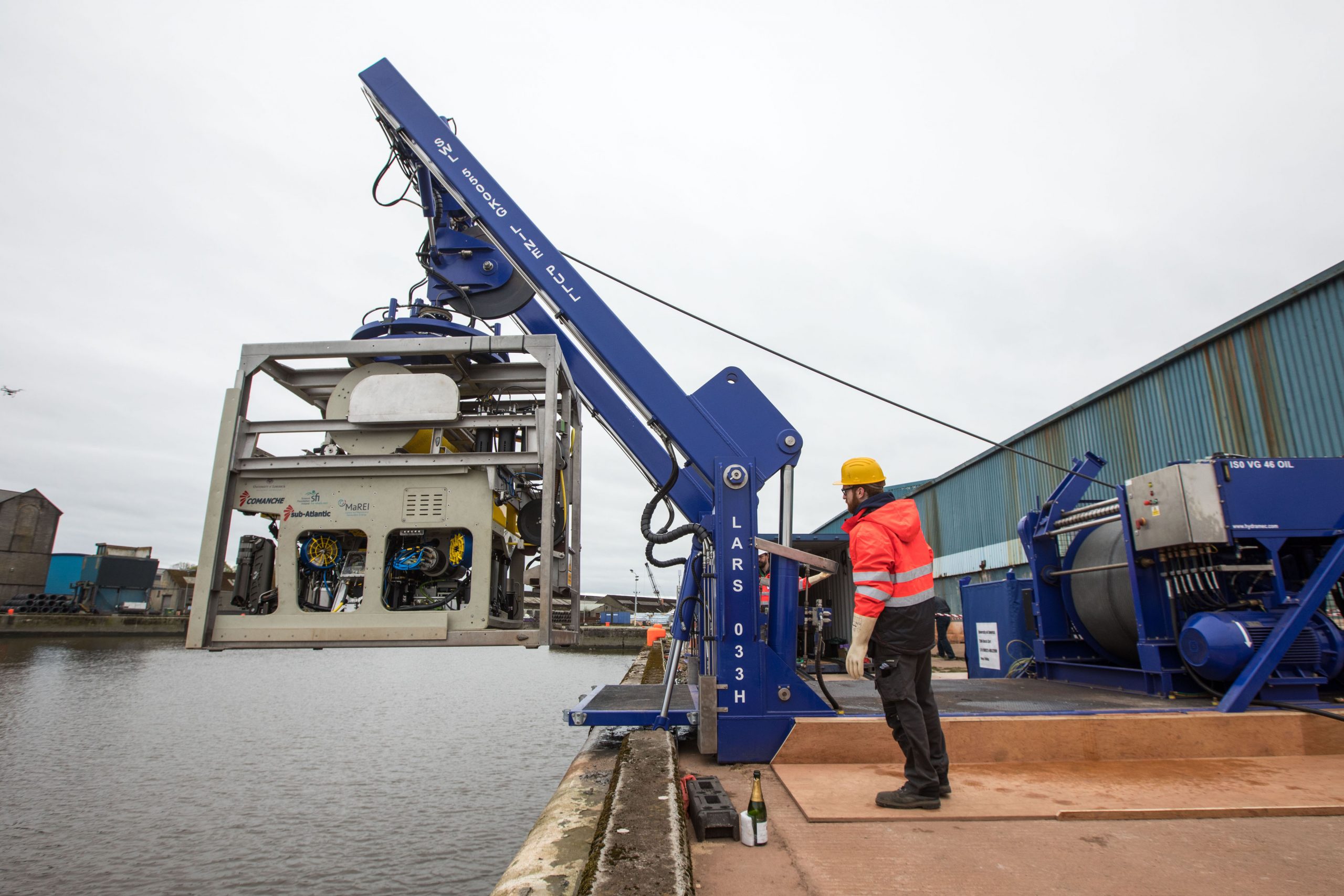
MaREI researchers in UL achieve autonomous docking for work class Remotely Operated Vehicle

Our MaREI researchers at UL made a significant contribution to our blue economy research, demonstrating for the first time the autonomous docking of a Remotely Operated Vehicle (ROV) to a Tether Management System (TMS) garage suspended from a ship in considerable wave heights. TMS docking is one of the most critical tasks faced by ROV pilots. The ROV Étaín successfully performed several fully autonomous docking procedures during the testing period.
Read more here
Breakthrough
First Demonstration of an Autonomous Docking System to TMS Suspended in considerable Wave Heights: During ROV operations in challenging offshore environments, Tether Management System (TMS) docking is one of the most critical tasks faced by ROV pilots, and any error can have serious consequences. During 2019, the work-class ROV Étaín, deployed from the Celtic Explorer, successfully performed fully autonomous docking procedures to dynamic TMS for the first time, showing superior performance relative to classical approaches.
Importance
There is a drive in ORE towards fully autonomous ships, platforms and vehicles to reduce LCOEs, primarily through extending operational weather windows. The TMS suspended from a floating surface presents a highly dynamic system. Typically, launch and recovery of ROV dictates operational weather windows. This becomes even more prevalent when operating from shore, where perception is reduced and communication lags need to be overcome. A fully autonomous docking system enables perception for the vehicle itself, comprising onboard autonomous control.
Translation
The machine vision system for visual ROV pose estimation relative to static/moving targets, based on the active light marker, has been developed and integrated into OceanRINGS+ ROV system. The system has been tested and validated in simulation and real-world environments. Additional development involved a suspended TMS heave motion position prediction method using Adaptive Neuro-Fuzzy Inference System (ANFIS). Publications include: ‘Vision-based autonomous docking for work class ROVs’ (Ocean Engineering); ‘Vision-Based localisation system suited to resident underwater vehicles’ (Sensors); and ‘Neuro-Fuzzy Dynamic Position Prediction for Autonomous Work-Class ROV Docking’ (Sensors).
Beneficiaries
Both the oil and gas and offshore renewable energy sectors will benefit from the automated ROV docking procedure, which can increase safety and reduce operational costs. High levels of autonomy can allow for progression towards fully autonomous ships, platforms and vehicles that are topical within the industry. We are the first to demonstrate and report this in literature.

UL Marine Robotics Laboratory
CRIS – Centre for Robotics and Intelligent Systems at the University of Limerick has two well equipped dedicated marine laboratories: a Dry Lab (C0-045) and a Wet Lab (CG-035).
Read More




